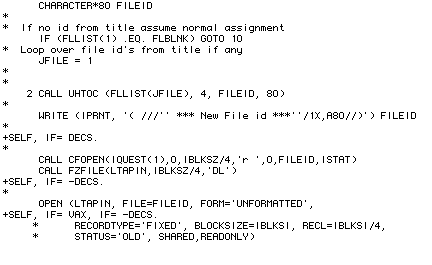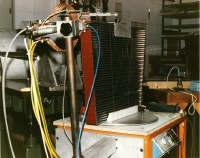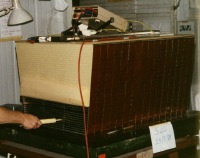The group was primarily interested in the development of the electromagnetic calorimeter. A prototype of a liquid argon detector was realized and successfully tested. However, the HPC technique was finally chosen.

| The experience gained during the above mentioned tests, was extremely useful for the software reconstruction of the showers in the HPC. The most relevant contributions from Genova are the geometrical shower axis reconstruction and the so called "second step" which completes the shower definition using information from other sub-detectors. Quantitatively about 1/3 of the official HPC reconstruction software was developed in Genova. HPDRAW, one of the two programs for the interactive display of HPC data, was also written here. |
| A sample of the over 34.000 line code for shower reconstruction in HPC. |


 Back to Welcome page
Back to Welcome page